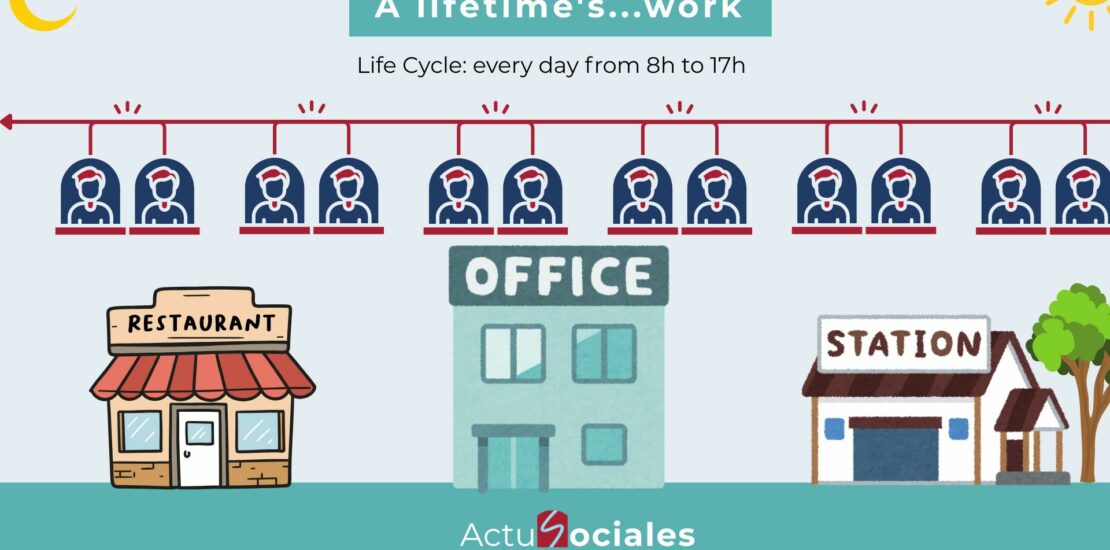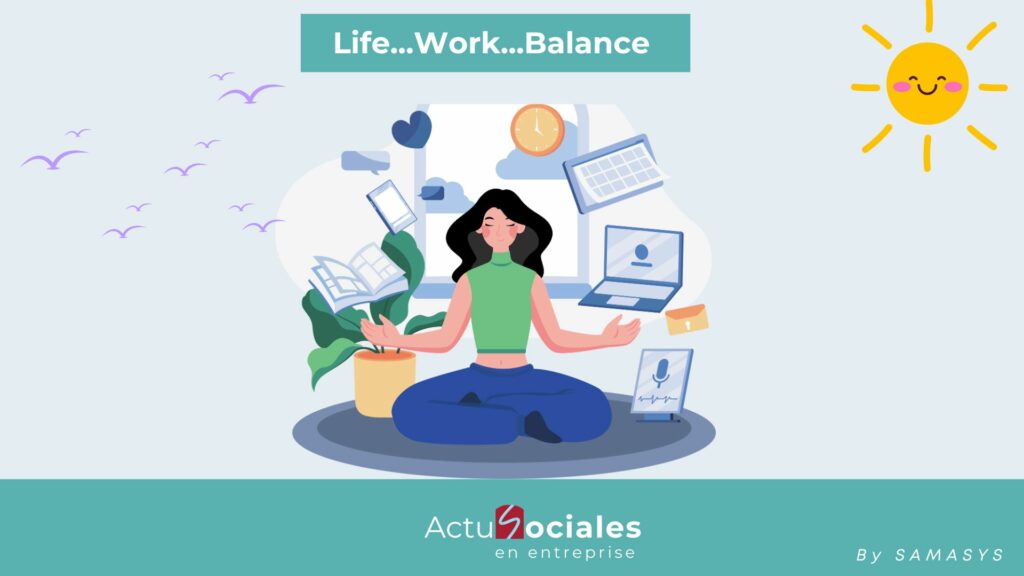“Behind Every Hour, a Life” For a More Human and Freer Approach to Working Time Management
- 14 October 2025
- Posted by: admin
- Category: Non classé

I. Preface – Behind Every Hour, a Life
The holidays are over. They went by — as they always do — far too quickly.
And what if, instead of resuming the same pace as before, we imagined stretching that pause a little differently?
As payroll outsourcing specialists, we process thousands of working hours every month — converting them into wages.
But behind those numbers and parameters are real lives unfolding before us. And as a deeply human company, we can’t help but imagine the people behind those payslips:
-
A single mother juggling two children and a full-time job.
-
A man in his fifties driving two hours every day to reach his workplace.
-
A young, passionate employee wishing his days were longer so he could do more.
Yet, despite their vastly different realities, all these people are subject to the same standardized rhythm of life — structured around a uniform number of working hours.
Our payroll systems, with their standardized rules, replicate this pattern thousands of times.
One day, we’d love to count working hours that respect the uniqueness of each individual:
-
Schedules that adapt to life’s urgencies.
-
Organizations that leave space for individual freedom.
-
Rest periods that truly recognize the effort given.
Of course, that would make our job more complex…
But how rewarding it would be to know that working time is no longer just a constraint — but a tool for respect and well-being.
What if We Rethought Working Time?
We often talk about “working time” in quantitative terms: 35 hours in France, 40 elsewhere, 48 in some Tunisian collective agreements.
But beyond the numbers, what does our organization of time say about our relationship to the world — to freedom, and to productivity?
Why do we work eight hours a day, five or six days a week?
Why is it a continuous day, usually starting at 8 a.m. and ending at 5 p.m.?
Why Sunday as a rest day — and not another?
These rarely asked questions take us back to the origins of time management:
-
Industrial heritage, which normalized the “8 hours of work / 8 hours of leisure / 8 hours of rest” formula.
-
Religious and cultural heritage, where Sunday rest was sanctified by the Church, then enshrined in social law.
-
Economic and military heritage, which favored uniform hours for collective efficiency.
But in a world where productivity is increasingly detached from physical presence, where offices are air-conditioned, where digital tools enable asynchronous collaboration, and where the boundary between personal and professional life fades — are these models still relevant?
Karl Marx’s reflection on alienation remains strikingly current: by conditioning our lives to a fixed structure, we lose control over our time, our energy, and our mental health.
Because working time is not just hours spent at the office:
-
Add commuting time — turning an “8-hour day” into a 10-hour day under professional constraint.
-
Add the mental load of reconciling fixed hours with family obligations: dropping off children, handling paperwork, managing emergencies.
Working time ends up shaping our entire existence: it dictates when we eat, when we sleep, when we see our loved ones.
It affects our physical health (stress, chronic fatigue) — and even that of our children.
Yet, most of us see it as something imposed — an external parameter we simply have to accept.
Even business leaders suffer from this organizational stereotype: they know certain schedules are counterproductive, but without managerial innovation or legal alternatives, they’re forced to replicate the same models.
Our Relationship to Time: A Matter of Perception
Working time is, above all, a subjective experience.
Some employees wish the day had 48 hours — they love what they do, thrive in it, and see productivity as a source of energy.
For others, the standard eight-hour day feels endless.
A simple typology might look like this:
-
The Passionate – They live their work as a life project; time flies.
-
The Disciplined – They respect working hours but count down to the end of the day.
-
The Disengaged – They find ways to “kill time.”
The real issue isn’t about longer or shorter hours, but about improving the quality of the experience.
Rethinking Working Time – A Global Movement
This reflection isn’t just philosophical — it’s happening worldwide.
?? United Kingdom & Iceland – Large-scale trials of the 4-day week with full pay: lower stress, higher engagement, no productivity loss.
?? Spain – State-supported pilot programs reducing weekly hours to 32.
???? Nordic countries – Widespread adoption of flexible schedules and hybrid work.
?? United States – Rise of “Results Only Work Environments” (ROWE), where only outcomes matter.
?? South Africa & ?? Kenya – Experiments reducing commute times and implementing compressed workdays to ease congestion.
These initiatives show that the discussion is no longer about increasing or reducing hours, but about rethinking the very organization of work.

What If We Followed the Rhythm of the Sun?
I dream of a model where we work in tune with natural light:
-
Start early, at sunrise, focusing on high-value tasks until midday.
-
Resume early afternoon with lighter, more creative or collaborative work.
-
Leave the evening free for family, personal projects, or rest.
Perhaps by 2050, we’ll look back at our 8-hour days as relics of the industrial age.
Conclusion – Time as a Shared Resource
An old Maltese friend of my father used to say, “You must give time to time.”
In a world that keeps accelerating, learning to use time wisely has become a strategic skill.
For companies, it means rethinking schedules, formalizing clear policies, and experimenting with innovative models.
For employees, it means recognizing the value of time spent at work — and ensuring it truly counts.
Back-to-work season, then, isn’t just a return to the office.
It’s an opportunity to reinvent our relationship with time — so that every hour becomes more than a constraint: a contribution to a shared project.

